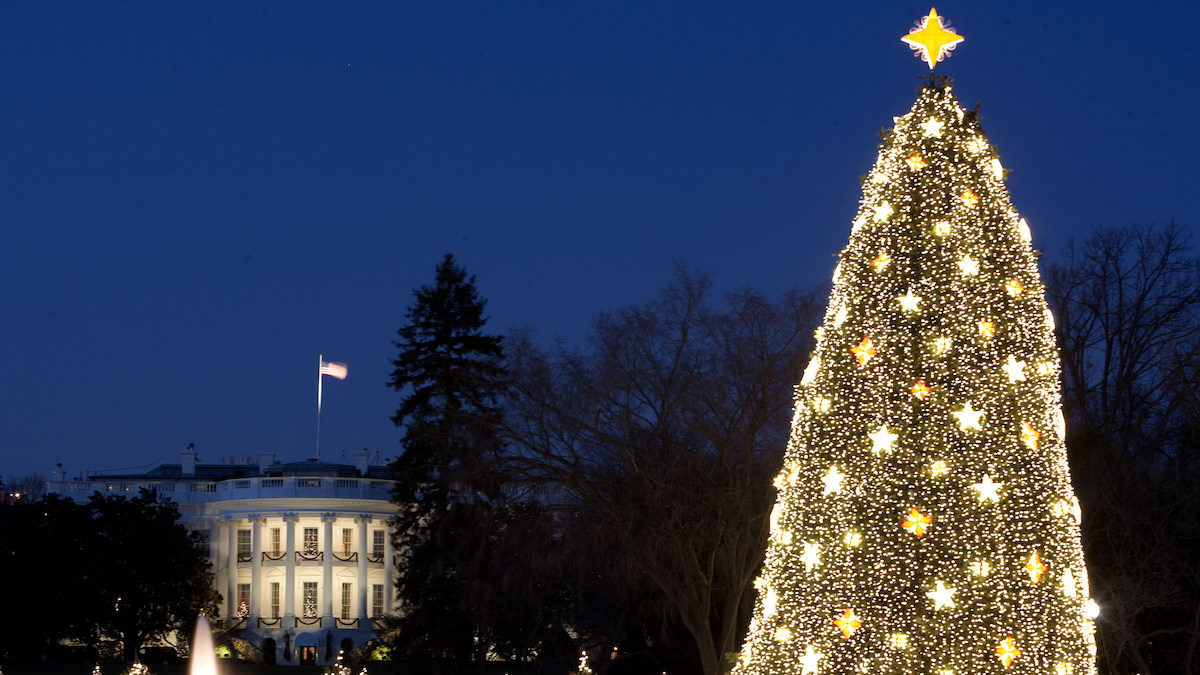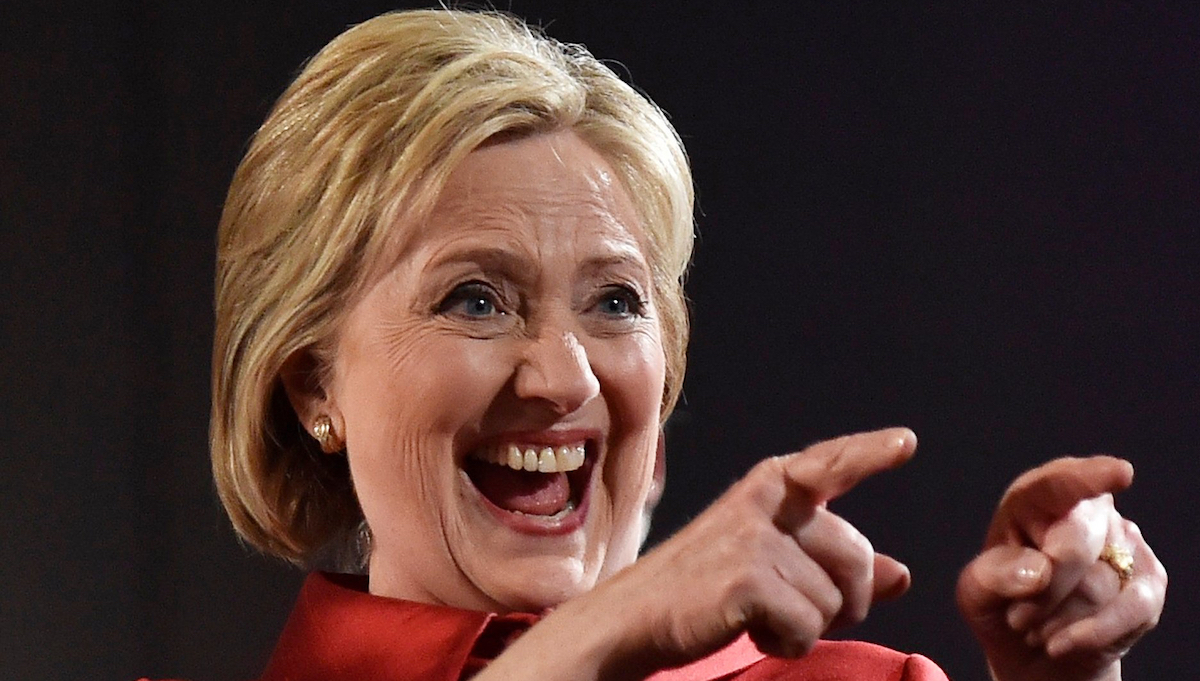The stunning November 8 U.S. presidential election showed that the Democratic Party has a major demographic problem on their hands: white voters, especially evangelical and traditional Catholic voters. The white vote went overwhelmingly for Donald Trump as did evangelical Protestants and Catholics.
Republicans may have a long-term demographic challenge with young Hispanics who will come of voting age in the future. Democrats, however, have a more serious challenge. White voters constitute about 70 percent of the electorate. White voters are not going away in the future, even if they decline as a proportion of the electorate. Democrats like to play identity politics through the race card and the gender card. This rhetoric is intended to turn out minority ethnic voters and women, but it did not work in this election for Hillary Clinton or down-ballot Democrats. The importance of the white vote was exactly the point made in Donald Critchlow’s Future Right: Forging a New Republican Majority (St. Martin’s Press, 2016), published last May. Democrats should have heeded the warning.
What the results of the 2016 election portend for both parties is the issue of the day. The election calls for fundamental rethinking for Democrats concerned about the future of their party. Republicans are now the governing party in the nation’s capital and across many states. Not since the 1920s have Republicans held so much political power. Voters have given them the responsibility to govern by addressing issues of job growth, health care, trade and immigration. The first step for both parties is to understand the results of this election.
The 2016 election marked the continued meltdown of the Democratic Party on the national and state levels. Under a charismatic figure, Barack Obama, Democrats put together a coalition of the rich, the poor, minorities and the young. This coalition brought Obama into the White House in 2008, following eight years of Republican control of the White House and an economic crisis of global magnitude. In this environment Obama won in many Republican strongholds, especially in suburban areas that usually voted Republican. He won reelection in 2012, but with lower margins among black and Hispanic voters, the young and women.
Obama’s success in these presidential elections, however, did not translate into success in electing Democrats to Congress or state offices. Voters showed their disgust with bailouts, ObamaCare, uncontrolled immigration and identity politics in every midterm election on the Obama watch. Republicans have gained 900-plus legislative seats in Congress and the state houses since Obama took office.
Why Clinton Lost
Trump lost the popular vote and he received one million fewer votes than did Mitt Romney in 2012. However, he won the Electoral College, taking 40 states, and Republicans maintained control of both houses of Congress. Republicans increased their control of state governorships and state houses. When Obama first took office, Democrats held 29 governorships; today they hold just 15, with one governor’s race still undecided. Republicans now are in the majority in three-fourths of all state houses. They flipped three state legislature chambers, including the Iowa senate, the Minnesota senate and the Illinois house. They are tied in the Connecticut senate. This voting trend was well underway before the 2016 election.
Hillary Clinton lost because she was a weak candidate. She may be telling her donors that FBI Director James Comey cost her the election, but her loss goes deeper. Never one to take responsibility for any wrongdoing, Clinton claims that the FBI statement about reopening the investigation of her emails cost her Wisconsin, a state that had not gone Republican since 1984. She said that internal polls showed that undecided voters in Wisconsin who decided in the final week of the campaign to vote for Trump had been influenced by Comey’s announcement.
She noted that Trump seized on Comey’s letter to rally independent voters. Trump did do this, and at his rallies, large crowds shouted, “Jail her” and “Drain the swamp.”
Yet there is little evidence that Comey’s letter to Congress was decisive in changing votes. Is it not likelier that she lost Wisconsin because she failed to visit the state or offer white Rust Belt voters a reassuring message about her trustworthiness or economic plans? Before the election, the Clinton campaign and many pundits maintained that the email scandal was already “baked” into the votes. Polls showed that her numbers were already in decline even before Comey’s intervention.
The real problem was she failed to rally the Obama coalition. She received 6 million fewer votes than did Obama in 2012. She lost key, formerly blue Rust Belt states (Wisconsin, Pennsylvania and Michigan) by about 112,000 votes, out of about 134.5 million votes cast nationwide. Trump’s administration should keep this razor-thin margin in mind as it moves forward with his agenda.
Clinton lost the election because she was Hillary Clinton. Most voters did not hold a high opinion of either Clinton or Trump. They disliked and distrusted both candidates. In the end, many voters, especially undecided independents, voted for Trump because they disliked Hillary Clinton more. Democrats made the campaign about Trump, warning that he was temperamentally unqualified for the White House. Voters were told that only Clinton stood between them and apocalypse. For about 20 percent of voters who went for Trump, the future of the Supreme Court was their most important concern. They saw a Clinton presidency as the real apocalypse with a court controlled by progressive pro-abortion judges for the next twenty years.
The Clinton campaign barraged the airways with TV spots warning that Trump would have his finger on the nuclear button. For Trump’s part, he did attack Clinton, but he gave a number of policy speeches outlining what his presidency would look like. She offered rhetoric, called half his voters “irredeemable” and “a basket of deplorables,” and angrily declared she was sick of angry, conspiracy- minded Trump enthusiasts.
Why Trump Won
Trump won white votes by a margin almost identical to Romney’s in 2016. White non-Hispanic voters went for Trump by a margin of 21 percentage points (58 percent to 37 percent), according to the Pew Research Institute. He fared about a percentage point better among Hispanic voters than did Romney, by winning about 30 percent of these voters. Clinton held a big advantage over Trump among blacks (88 percent to 8 percent), about the same margin Obama won in 2012, although less than his advantage in 2008. Trump actually increased the black vote by two points over what Romney received. The real difference in the black vote for Clinton was that blacks just did not turn out in the numbers for her that they had for Obama. She was an old white woman offering the status quo, as opposed to Obama, a youthful African American of mixed racial parentage.
Clinton enjoyed about the same margin of support among women as did Obama, but white women went for Trump. He won non-college-educated white women by a wide margin, and he received close to a majority of college-educated white female voters. Where he outperformed Romney was in the margins of votes he received from white men, both non-college-educated and college-educated. He won the male vote overall 53 percent to 42 percent for Clinton, a notably larger margin than the Romney advantage of 7 percent in 2012.
The Whopping 30% Margin
Trump’s margin among whites without a college degree was the largest among any candidate in exit polls since the 1980s. Two-thirds of non-college-educated whites voted for Trump. This resulted in a whopping 30 percent margin for Trump over Clinton in that group. He won college-educated whites as well (49 percent to 45 percent), which should be a warning to the Democrats and belies many pundits who describe Trump voters as angry, less-educated white males. Romney won the white vote by slightly better margins, but Trump won where it counted in key battleground states.
The Clinton campaign hoped that the Hispanic vote would compensate for the loss of white male voters and a projected lower turnout among African Americans. Democrats had launched major voter registration campaigns in Hispanic communities. These efforts paid off in a few states such as Nevada and Arizona. Clinton won Nevada but lost Arizona by about 4 points. Overall Hispanic voters counted for about 11 percent of the electorate in the general election, but it should grow in subsequent elections. What astounded many pundits and dismayed Clinton enthusiasts is that Trump increased the Hispanic vote by about one percentage point over what Romney received. Trump won nearly 30 percent of the Hispanic vote.
Progressives for Clinton are bewildered by these Hispanic Trump voters. How could any right-minded Hispanic vote in favor of a candidate in favor of tighter borders and who described illegal aliens crossing the Southern border as criminals, drug-dealers and rapists? The reasons are not difficult to find. Hispanics, like many other voters, listed jobs and the economy as their major concerns. Terrorism was second on their list of concerns, higher than immigration.
Hispanics generally favor a path toward legal status for illegal aliens. The Hispanic vote, though, is not monolithic. Hispanics are composed of Mexican Americans, Puerto Rican Americans and Cuban Americans, as well as people from Central America and Latin America. They are new and old immigrants, young and old, male and female, low-income and high-income, and religious and non- religious. Voting breaks along these various lines. Cuban Americans broke heavily for Trump in Florida. Older Hispanics, some of whose families came to this country before many of their Anglo counterparts, tended to vote for Trump. Surveys before the election showed that nearly 20 percent of Mexican Americans favored immediate deportation of undocumented aliens.
Catholic Voters Go Trump
Critical to Trump’s narrow margin in the Rust Belt were working-class white Catholics. George F. Marlin, author of The American Catholic Voter: 200 Years of Political Impact (2004), broke down generic exit polls to show just what a great impact Catholic voters had on the 2016 election. The Catholic vote tends to be a critical swing vote. Democrats won the Catholic vote in 1976 (Carter), 2000 (Gore), 2008 and 2012 (Obama). In 2016, Trump won 52 percent of the Catholic vote. Trump’s success with Catholics was especially important in the economically depressed Rust Belt states of Ohio, Pennsylvania, Michigan and Wisconsin.
Many of these Catholic voters were older voters, because their children and grandchildren have moved to more prosperous regions. A breakdown of counties with heavy Catholic populations in these Rust Belt states reveals just how important the Catholic vote was for Trump. For example, as Marlin shows, the top 15 heavily Catholic counties in Ohio turned out in greater numbers for Trump. Clinton’s share of this Catholic vote declined dramatically from what Obama had received in 2008 and 2012. For example, in 63 percent Catholic Putnam County, Ohio, Clinton suffered a 28-point decline from Obama’s 2012 showing. Similar patterns can be found in Pennsylvania, Michigan and Wisconsin. In 65 percent Catholic Elk County, Pa., Clinton suffered a 25-point decline from Obama’s 2012 showing.
In each of these states, the margins between Trump and Clinton were so small that the Catholic vote proved decisive. In Pennsylvania, Catholics came out in full force and gave Trump his slight 1 percent margin. He won Ohio with 52 percent of the vote, primarily because working-class Catholics turned out for him. Clinton won only three of the highly concentrated Catholic counties in Ohio. In the counties she won, her vote was significantly lower than Obama’s had been in 2008 or 2012.
In Michigan, blue-collar Catholics likewise went for Trump, who beat Clinton with a little more than 10,000 votes out of 4.5 million cast in the state. In Wisconsin, where Obama had won 24 of the top Catholic counties in 2008, Clinton received over 50 percent of the vote in only five of those counties. In short, Catholics gave Trump the edge.
Will Democrats Learn?
Clinton’s unexpected loss in the Electoral College left Democrats reeling. Democrats have a clear problem with white voters, especially blue-collar and religious voters in the Midwest. Given that she won the popular vote nationally, and the margins were so thin in Rust Belt states, Democrats are likely to draw the wrong lessons from Clinton’s loss. The wrong lesson will be that with a more left-wing candidate, a Bernie Sanders or an Elizabeth Warren, they might have won the White House in 2016 and can win in 2020 if the party swings left. Already Bernie Sanders has issued a call for the party to move left. Writing an op-ed piece for the New York Times immediately after the election, Sanders declared that the party needs to run in the future against Wall Street and corporate interests and for the little guy by offering “free” medical care, college tuition, affordable housing and better pensions.
The compulsion to turn left is built into the party. A third of the Democratic congressional caucus comes from three states, California, New York and Massachusetts. Left-wing Democrats are already talking about electing Keith Ellison, an African-American Muslim Congressman from Minnesota, as chair of the Democratic National Committee. He helped carry his state for Clinton by one percentage point, but it is doubtful he can provide the message to win white and religious voters in 2020, let alone in the 2018 midterm when Democrats will have to defend 25 Senate seats.
Another wrong lesson of the election lies in the left’s predictable calls to end the Electoral College—a standard left-wing response when Democrats lose the presidential election while winning the national popular vote. The Electoral College was written into the U.S. Constitution in recognition of the importance of states in the federal system. It serves to ensure geographic diversity in support for the winner and to protect the interests of less-populous states. It also enhances the likelihood of a clear election outcome, by reducing the incentive for vote-count challenges in multiple states. If the national vote count were very close, imagine the chaos that would ensue with demands for recounts in many states so as to extract the maximum number of votes for a national winner of the popular vote.
The Future of the GOP
The ball is now in the Republican court. If the party under Trump’s leadership can fulfill its promise to create more jobs, grow the economy, address immigration and strengthen American leadership in the world, Republicans will deepen their support among all voters. Fulfilling their promises through legislation will be tricky, but can be accomplished through good leadership.
As president of the United States, Trump will have executive power at his disposal. He can overturn many of Obama’s executive orders, including the Deferred Action for Childhood Arrivals (DACA). He can order the deportation of illegal immigrants with criminal records. He can enforce a ban on Syrian immigration until better checks are in place. There is much to be accomplished on tax reform, deregulation, job growth and trade. If Trump and his party accomplish just half of what is promised, the future is theirs—and ours.








